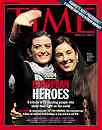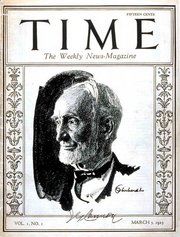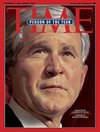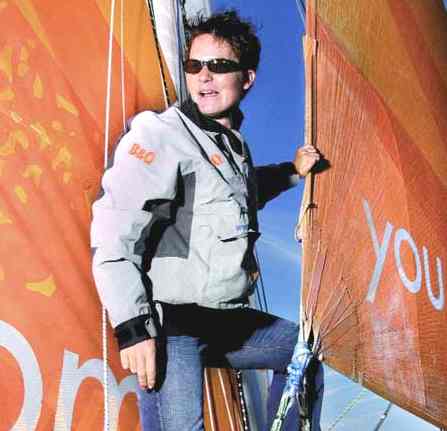|
TIME MAGAZINE
|
||||
|
HOME | AUTOMOTIVE | EDUCATION | FILMS | MUSIC | NEWS | POLITICS | SITE INDEX | SPORT |
||||
|
Time (officially capitalized TIME) is a weekly American newsmagazine, similar to Newsweek and U.S. News & World Report. A European edition (Time Europe, formerly known as Time Atlantic) is published from London. Time Europe covers the Middle East, Africa and (since 2003) Latin America. An Asian edition (Time Asia) is based in Hong Kong. A Canadian edition (Time Canada) is based in Toronto. The South Pacific edition, covering Australia, New Zealand and the Pacific islands, is based in Sydney. In some advertising campaigns, the magazine has noted that the letters time stand for "Today Information Means Everything."
TIME's first cover (March 3, 1923)
History
The first issue of Time was published on March 3, 1923, featuring on its cover Joseph G. Cannon, the retired Speaker of the United States House of Representatives. Preceding both of its major competitors, Time was the first weekly news magazine in the United States. It was co-founded in 1923 by Briton Hadden and Henry Luce. Both had worked together previously at Yale, with Hadden and Luce serving as chairman and managing editor, respectively, of the Yale Daily News. Hadden died in 1929, and Luce became the dominant man at Time and a major figure in the history of 20th-century media. Hadden was a rather carefree figure, who liked to tease Luce and saw Time as something important but also fun. That accounts for its tone, which many people still criticize as too light for serious news and more suited to its heavy coverage of celebrities (including politicians), the entertainment industry, and pop culture. It set out to tell the news through people, and for many decades the magazine's cover was of a single person. People magazine was originally inspired by Time's People page.
Style
Time has always had its own writing style, parodied most famously in 1938 by Wolcott Gibbs in an article in The New Yorker: "Backward ran sentences until reeled the mind … Where it all will end, knows God." The early days of incessantly inverted sentences and "beady-eyed tycoons" and "great and good friends," however, have long since vanished. The magazine has only ever published one official editorial, in 1974, calling for the resignation of Richard Nixon. Time is also known for its signature red border, which only changed once in the magazine's eighty year history—the issue released shortly after the September 11, 2001 attacks on the United States, which featured a black border to show mourning.
Mergers
Time became part of Time Warner in 1989 when Warner Communications and Time, Inc. merged. Since 2000, the magazine has been part of AOL Time Warner, which subsequently reverted to the name Time Warner in 2003.
President George W. Bush becamePerson of the Year 2004
Man of the Year
The magazine's most famous feature over its 80 years has been the annual Man of the Year cover story, in which Time recognizes the individual or group of individuals who have had the biggest effect on the year's news. In 1999, this feature was renamed "Person of the Year." Despite the title, the recipient is not necessarily an individual -- in 2003, it was "the American soldier" -- or even a human. In 1982, the home computer was recognized as "machine of the year". Albert Einstein was Time's person of the century in its last edition of 1999.
Controversy has occasionally arisen due to the designation of hated figures as "Persons of the Year." The distinction is supposed to go to the person who, for good or ill, has most affected the course of the year; it is therefore not an honour or reward. In the past, such figures as Adolf Hitler or Joseph Stalin have been Persons of the Year. The magazine backed down from this policy for its Person of the Year in 2001: the feeling was that the person who had most affected the course of the year was Osama bin Laden, but the editorial board weighed the policy against the risk of inciting outrage, and named Rudolph Giuliani instead.
Time Heroes
Time Magazine has paid "tribute to 29 dazzling people who shine their light on the world..." in their October 11 special issue. Ellen MacArthur was selected for her inspiration in 'Setting Sail for Greatness' and her work with the Ellen MacArthur Trust that takes young children suffering from cancer sailing. Ellen is featured alongside 28 other heroes from all walks of life who have made an impact on the environment they work in. The European Heroes include Anita Roddick, founder of The Body Shop who campaigns for human rights, fair trade and social justice; actress Emma Thompson who is an ambassador for ActionAid since 2001; and Otylia Jedrzejczak of Poland who won a gold medal in Athens in the 200m butterfly finals and has committed to auctioning her medal to help raise money for children suffering from leukemia. The European Heroes were chosen as 'they inspire, create, devote themselves to others, and even risk their lives...' www.time.com
Ellen Macarthur in her element
Time For Kids
Time For Kids is an division magazine of Time Magazine, that's specially published for children and is mainly distributed in classrooms. TFK contains some national news, a "Cartoon of the Week", and a variety of articles concerning popular culture that young ones may be interested in. One annual issue concerning the environment is distributed near the end of the U.S. school term. The publication hardly ever ranges above fifteen pages front and back.
No Time for Charity
It is our experience that Time Magazine is reluctant to share articles it has put together from other research most of which is freely available on the internet. We have a different policy; to share information with others wherever possible and not to make a fuss about it. That said we are a not-for-profit concern, whereas most magazines in print, including Time Magazine are not.
ABOUT ELLEN MACARTHUR
Ellen grew up in landlocked Derbyshire, the daughter of two. She became hooked on boats and sailing after her aunt took her on a sailing trip when she was just 4. By the time she'd reached 8, Ellen had her own dinghy, which she used on her local pond. At 18, she was already sailing solo, notably on a trip around Britain. The young Ellen always wanted to go to university, but came down with mononucleosis, which scampered her plans. With time on her hands to contemplate, Ellen decided at this point she wanted to be a professional sailor.
Inevitably, the road ahead was harsh financially. For about 3 years Ellen lived in a 90 square foot shed in a boatyard with only basic facilities. From here she worked and began her sponsorship quest. With only 2 replies to around 2,500 letters, she carried on determinedly. Eventually, after racing solo across the Atlantic, she teamed up with Kingfisher plc. She was just 22. Three years on and she was sailing an 18 footer in one of the hardest ocean challenges; the Vendee Globe non-stop single handed circumnavigation. Ellen finished 2nd after 94 days. She was the youngest, fastest (and smallest) Briton to sail alone around the world non-stop.
Ellen
28, says she is lucky to be doing what she loves. Her French
admirers call out her favourite expression: à donf, which means
"go for it" and this is what she's been doing all her life.
In the grueling world of round the world racing it seems this is what you
have to do, in between just getting on with it.
Links to other TIME MAGAZINE stories
News A to Z directory, please click on the links below to find your favourite news or to contact the media to tell your story:
| ||||
|
IF YOU HAVE ANY GOOD STORIES TO TELL THEY'D LIKE TO HEAR FROM YOU WITH PICTURES, ETC.
|




